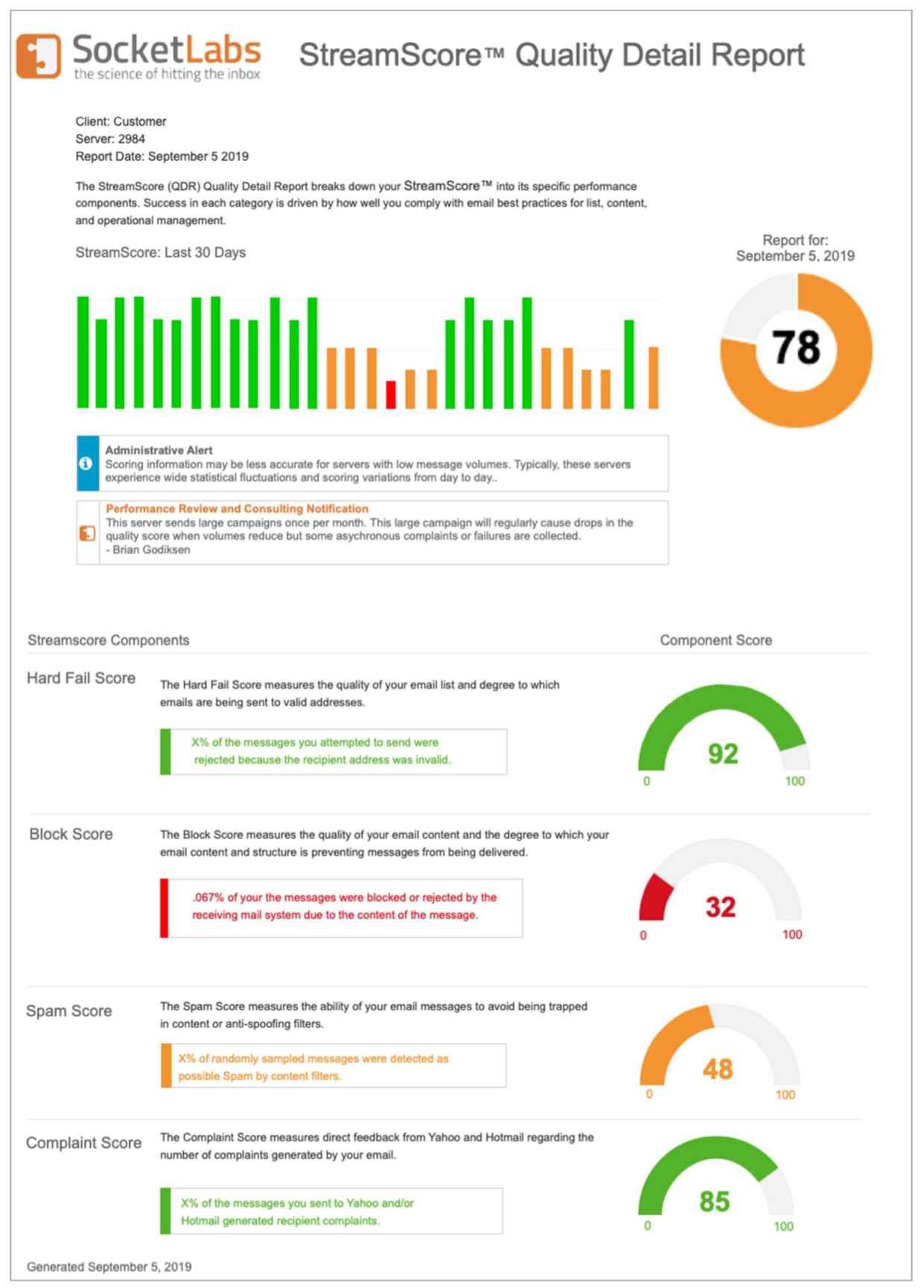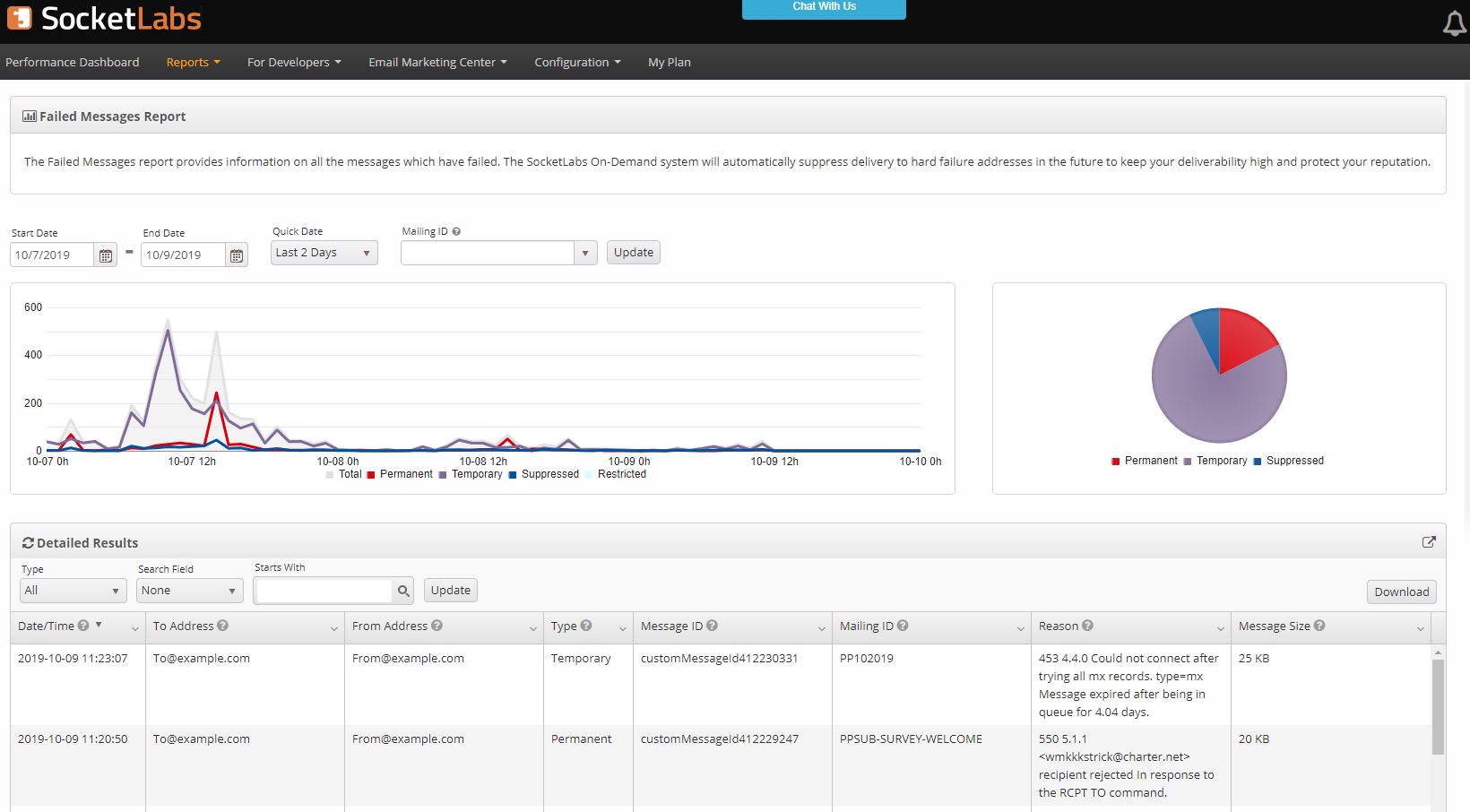
The success of your business’ email is important, and the analytics that you use to monitor this success is even more important. If you play any role that is responsible for the success and reliability of your organization’s email, it’s vital that you are following email analytics best practices. Understanding and following email analytics best practices will help ensure that you are tracking and monitoring the analytics that have the biggest impact on your organization’s bottom line.
Email success means different things to different people. A marketing organization may be monitoring opens and clicks, whereas a developer or system admin might watch delivery and fail rates. At the end of the day, the email analytics that you care most about are going to be dependent on the type of email you send, and more specifically, your organizational goals and priorities. In this blog we are going to cover:
- Email analytics best practices to follow
- What you should expect from your email service provider (ESP)
- How you can maximize your email deliverability optimization with an email analytics report
How to Track Email Metrics & Analytics
If you send an email for your organization, whether it is transactional or marketing, advanced email analytics reports are probably something you rely heavily on…that is, if you have access to them. Too often, we see businesses trying to take their email infrastructure in-house. This often leads to more expenses than expected, wasted man-hours, lots of headaches, and most importantly a lack of useful email analytics reporting. To get the best reporting on your email, an ESP will provide you with the capability to closely monitor and improve the success of your email.
An ESP will help do a couple of things:
- Infrastructure – An ESP will help completely rid of any overhead costs related to email infrastructure and technology. Things like server configuration and maintenance, IP management , APIs, security and encryption, and other supporting technologies will all be part of the package when working with the right ESP.
- Support – Because the infrastructure is managed by your ESP, the need for email support should be significantly lower as technical system setbacks will be far less common. If you do run into any kind of deliverability issues however, an ESP like SocketLabs will provide personalized support resources to help get you where you need to be.
- Email Performance Metrics Tracking – Email senders will often use SocketLabs for the in-depth email analytics reporting capabilities that are offered on every plan level. Our customers send email that is vital to the success of their business, so having the best performance tracking technology is a definite requirement. With over 12 years spent developing to perfect email platform for our customers, we have created a completely comprehensive reporting dashboard and support system that gives senders every metric and bit of advice they could need to maximize their email performance metrics.
Let’s explore!
Once you find the right ESP fit for your organization, you will be able to start sending, tracking, analyzing, and optimizing your email to get the results and ROI you want. To learn more about email service providers and how to choose the right one for your organization, read my blog on email customer service.
Email Analytics Reports That are Important to The Success of Your Email
Analytics are the lifeblood of today’s business. With modern technology, people can track and analyze every aspect of their business…email is no exception. With almost 300 billion emails sent every day, there is a lot of email data out there. Luckily, now with modern email analytics software, reporting and email metric tracking is more advanced and user-friendly than ever before, allowing enormous amounts of data to be processed and packed for easy consumption.

Engagement Reporting
As an email sender, engagement is very important. You want to make sure that your recipients are actually opening and interacting with the important transactional or promotional information you are sending to them. With email engagement tracking set up, customers can monitor how their email recipients are interacting with the messages sent to them; specifically, if they are opening the message, clicking on the links within the message, or if the recipient has unsubscribed from the message.
All of these email performance metrics are captured and reported in the SocketLabs engagement report so senders can see how their audience is interacting with their mail. If you notice your emails aren’t performing well overall, engagement reports are a great starting point to see if you need to tweak the messaging, design, or overall user experience of your email.
![]()
SocketLabs also just released completely secure engagement tracking with the flip of a switch so customers can now avoid the arduous process of setting up secure engagement tracking in-house. To learn more about our easy secure engagement tracking check out our press release.
StreamScore Reporting
With select SocketLabs plans, customers have access to the SocketLabs StreamScore Detail Report. This is a quantitative email analytics report that breaks down vital email metrics into a weighted, aggregate score to help senders visualize and monitor the overall health of their email performance metrics with respect to:
- Hard failures
- Blocked messages
- Spam score
- Complaint score
See the example StreamScore report below:

StreamScore takes data on the aforementioned areas, and generates one cumulative score that will help senders track the general health of their email. Two customers could have a score of 78 but the way they got there could be completely different. The StreamScore email analytics reporting dashboard helps senders isolate specific functions of their email like:
- How often an email stream is sent to invalid addresses or is marked by spam
- How relevant the content is and how well the audience engages with
- How often SocketLabs’ content analysis technology identifies your mail as potential spam
As with almost all of the SocketLabs platforms features, StreamScore is designed to help email senders get the most from their email service provider with more emails hitting the inbox and an increased return on investment. No matter what ESP you use or how you send email, maximizing your email success will always start with following email analytics best practices.
Failed Message Report
If you send high volume email, you have dealt with message failures. We get it, it can be stressful to see your important, often timely, emails failing delivery. Working with the right ESP will help to mitigate these occurrences. With a good ESP, failures related to the infrastructure and failures related to external forces like bad recipients, full mailboxes, or previous negative engagement will be minimized. But with some failures that are out of your control, you will want the ability to track, monitor, and adjust accordingly. To do that, you will need to see where the failures are coming from. Within the SocketLabs failed message report, you can see the type of failure, the cause of failure, date, time, from and to address, and other details you will need to know about each failure to minimize future setbacks.

What to Take from the Importance of Email Analytics Best Practices
No matter what type of email you send, the way you monitor, track, and act on your email metrics will be a huge factor in determining your deliverability. That’s why it is important to follow email analytics best practices. The more granular your analytics are, the more you will know about your email performance metrics. This is the first step in creating an optimized email program for your organization.
Visit the email analytics software product page for more details about SocketLabs’ leading email analytics software, or contact us online to learn more.







